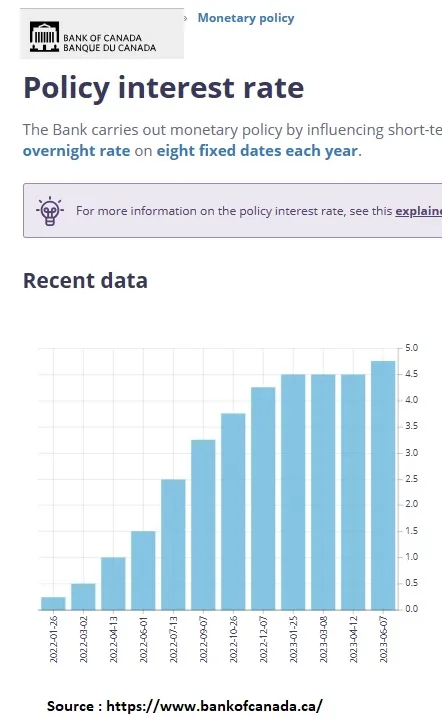Naviguer dans la Transition de l'Immobilier Commercial : Investir dans l'Immobilier Résidentiel Multifamilial face à la Hausse des Taux d'Intérêt
Dans le monde multifacettes de l'immobilier commercial, un élément qui prend souvent les investisseurs au dépourvu est les changements soudains de politique. En mars 2022, les banques centrales du monde occidental ont adopté une position agressive contre l'inflation, augmentant les taux de la politique à court terme. Bien que l'efficacité de cette stratégie soit sujette à débat, l'effet d'entraînement sur les marchés obligataires et hypothécaires était indéniable, entraînant une hausse des taux obligataires à 5 et 10 ans.
Le secteur de l'immobilier commercial, avec ses courtiers et investisseurs en logements multifamiliaux, a ressenti les ondes de choc de ces changements.

Notamment, même avec les hypothèques assurées par la SCHL généralement favorables disponibles pour les propriétaires d'immeubles d'appartements, nous avons encore constaté une augmentation significative des taux à partir de mars 2022. Alors, comment les investisseurs en logements multifamiliaux qui acquièrent des propriétés dans ce paysage changeant peuvent-ils protéger leurs investissements?
Déverrouiller la Matrice du Succès dans l'Investissement Multifamilial
La matrice de succès pour un investisseur multifamilial se résume à un aspect important : le potentiel de loyer de la propriété. S'assurer que la propriété ciblée a un avantage considérable dans les loyers actuels est crucial. Cela ne fournit pas seulement une marge pour d'éventuelles erreurs de gestion, mais équipe également l'investisseur avec une protection contre les futures hausses des taux d'intérêt.
Considérons une propriété urbaine typique, en supposant qu'il n'y ait pas de besoin immédiat d'améliorations substantielles en capital. Si le potentiel de hausse des loyers est de 50% (ou plus) et que la propriété est achetée à sa juste valeur marchande, avec un taux de capitalisation de 4,25% et un taux d'hypothèque assurée par la SCHL de 4,8% sur 5 ans, la perspective de l'investissement est extrêmement positive.
Par exemple, une propriété avec des revenus bruts de 200 000 $ et un ratio de dépenses de 40% génère un revenu d'exploitation net de 120 000 $. Si l'investisseur peut réaliser 70% de la hausse des loyers sur cinq ans, une propriété achetée pour 2 823 529 $ en 2023 pourrait valoir 3 811 764 $ d'ici 2028, en supposant un taux de capitalisation constant de 4,25%. Cela implique une appréciation de la valeur de la propriété de 35% et une appréciation impressionnante de l'équité de 89%,

étant donné un ratio prêt-valeur de 57% et un acompte de 43%. Il s'agit d'un scénario très plausible dans notre paysage d'investissement multifamilial, même sans prendre en compte les effets potentiels de l'inflation sur les taux de location.
Le Paysage Évolutif de l'Immobilier Commercial et de l'Investissement Multifamilial
Le secteur de l'immobilier commercial, et particulièrement l'investissement multifamilial, n'est pas étranger aux frustrations. Les jours de faibles taux d'intérêt pendant la période du Covid-19 sont révolus, mais les opportunités abondent encore. Le paysage actuel voit un mélange de vendeurs voulant se délester de propriétés et d'investisseurs à long terme à la recherche de transactions viables. Le secret pour réussir en tant qu'investisseur multifamilial réside dans l'achat de propriétés avec un potentiel de hausse des loyers prometteur à des prix du marché équitables, et simplement dans la gestion des propriétés sur le long terme.
Chez Immobilier Baron, nous excellons à combler l'écart entre les acheteurs et les vendeurs d'immeubles d'appartements. Nous offrons des services de courtage de boutique haut de gamme pour les transactions d'appartements sur les marchés de l'Ontario et du Québec




